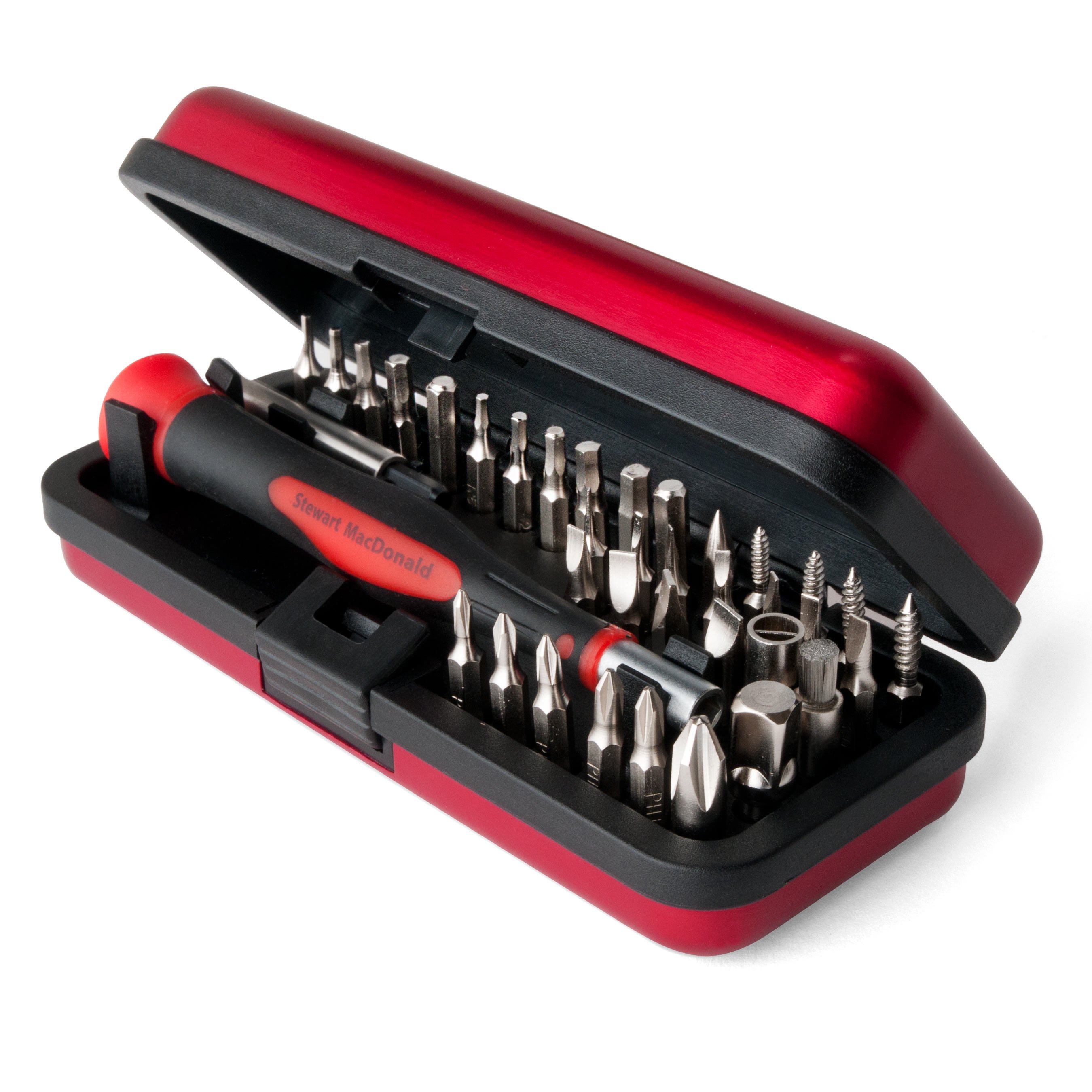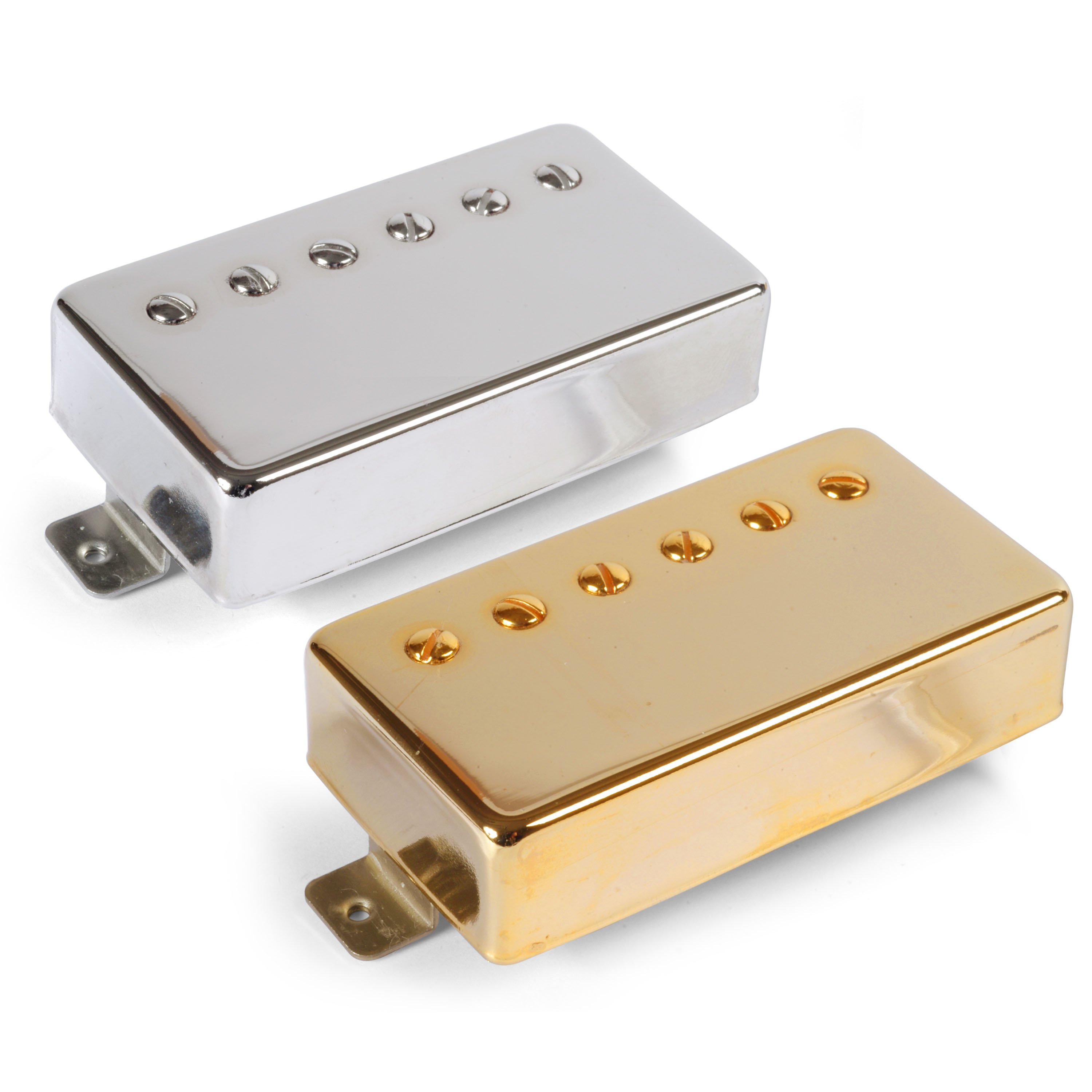No sound from your guitar? Let's talk about short circuits...
Issue 263 June 02, 2016
All wired up, but no sound! It can happen to anybody: you do some wiring or change your electronics, then find you’ve got no sound coming out of the amp. In this Trade Secret video, Matt Brooker helps you troubleshoot.
About the guitar in this video: This ’04 Les Paul Faded Special has been suped up with Parsons Street humbuckers, a bridge converted from Nasvhille Tune-O-Matic to an ABR-1 (see this tip in Trade Secrets #147), and a lightweight aluminum stop tailpiece with TonePros locking studs.
- Matt shows how the tiniest thing can kill your sound
- What not to do when you install new pickups with a braided lead
- Places to look for short circuits
Video Transcription
Matt Brooker: [on-screen text reads: Stewart-MacDonald - Trade Secrets!] Here's a situation that comes up in our tech department all the time, a customer calls in [on-screen text reads: No Sound? Fixing Short Circuits] and says, "I've upgraded my guitar with new components, wired it up, plug it in, and I get no sound." [on-screen text reads: Matt Brooker - StewMac Tech Advisor] There's nothing from the pickups, there's no buzzing or anything, just nothing. Of course, if something's hooked up incorrectly, that'll cause all kinds of problems. [on-screen text reads: Does the wiring match the instructions?] So you need to double and triple check your wiring first, but it's also possible to have everything hooked up where it should be and still get no sound. If that's happening on your guitar, there's probably a short somewhere. An electric guitar has a hot and a ground. They start at the pickups and run separately through the controls and switches and meet up at the output jack, that signal is what gets sent to the amp to give you a sound. If for some reason, the hot and the ground make contact somewhere in here, it'll short the signal out before it gets to the output and you'll have no sound.
No sound, but it cuts in and out when you move it
On this guitar, I don't get a sound, but I can get it to cut in and out, depending on how I hold it. When something like that's happening, a good first step is to open up the cavity and plug the guitar in [on-screen text reads: Guitar Tech Screwdriver Set - stewmac.com]. All right, and I got this tilted up a little here, so you could see it on the camera. I could see right away what's the problem. And it's that these pickup lead wires are at the left way too long.
These metal braided parts are shielding and they're connected to ground, just like the backs of all these pots. What happens when they're this long is that, when you put the cover on it smushes all these wires down in there and they're left to flop around in here and they flop around, they're making contact with parts of the circuit that are hot and this is what you get. These points right here, the two terminals on the pot and the leg of this capacitor are all carrying the hot signal. So anything grounded that touches it, like this shielding will cut it right out.
Getting a darker sound, like you have the tone turned down to zero
Another thing that can happen with these is, if it touches the other leg of the capacitor, the one that's closer to the tone pot, you'll get something different, but it's still a problem. You'd hear it's a lot darker. What's happening is, it's basically sending all your signal through the capacitor instead of just how much you control with your tone pot. So it makes it like you had the tone turned down to zero all the time.
Trimming and soldering the lead wires so they fit into the cavity
For both of these situations, what you want to do is trim the lead wires so that they fit more neatly in the cavity. Pickups come with lead wires that are longer than you really need so they can be installed into a guitar of any shape or size [on-screen text reads: Solomon soldering Iron - stewmac.com]. What I'm going to do is desolder these, the solder sucker is really handy for getting that extra solder out of the way before I rewire the pickup.
Now that I've got these unsoldered, first thing I'll do is trim them to length. Usually, I'll tuck a little bit of that back in there just to give yourself a little bit of extra slack. But basically, you want it so that these have enough to get where they're soldered to and not do a whole lot else. Call that my mark, trim that one [on-screen text reads: StewMac Guitar Pliers Set - stewmac.com], trim it there. So this internal wire, the one with the black cloth insulation, that's the hot, and the metal shield is our ground.
The hot wire is going to be connected here to the input lug of the volume pot. And the metal shield will be grounded by soldering to the back of the pot. The reason I'm going to strip back some of this metal insulation is, because I don't want these any stray little fibers of metal shielding that's grounded to be right up next to that hot connection on the pot. It would be really easy for one of those fibers to touch that and short out the signal, or get soldered on it. That'll connect the two and that'll also cause the short.
Re-soldering the hot lead and ground
So now I've separated these out, there's a couple ways I could go with this. One would be, I could just trim this here so there's no separate wire at all. Another way to go about this, a tip I got from Eric Coleman, is to trim this short so there's a little bit of a tail there, so to speak. And that gives me a nice little flat shielded wire that's easier to solder to the back of a pot, so I don't have to get as much solder on there. All right, that's the hot lead. And now getting the ground where I want it. All right, now we're wired back up again. Remember the little frayed ends of the shielded wire, here's just one of them and you could see how tiny that is. But all it takes is one of these to short out your signal.
Hot terminals against a shielded wall
But it's not just frayed ends that you've got to watch out for, like on a toggle switch. Here, you've got two hot connections and right in between them is a ground. Even if you're not using shielded wire, if you stick wire a little too far through that terminal, it's going to ground out on that terminal there in between and that'll cause a short. A lot of guitars have conductive paint or copper tape in the cavities to minimize electronic interference. So that shielding is also grounded and it can cause a short if something touches it that shouldn't. So you always want to be mindful and make sure you don't have any hot terminals right up against a shielded wall, like here in a toggle switch cavity, it's kind of a tight fit. So just make sure you're aware of how things are kind of positioned in there. This thing's soldered up clean and ready for the stage.





